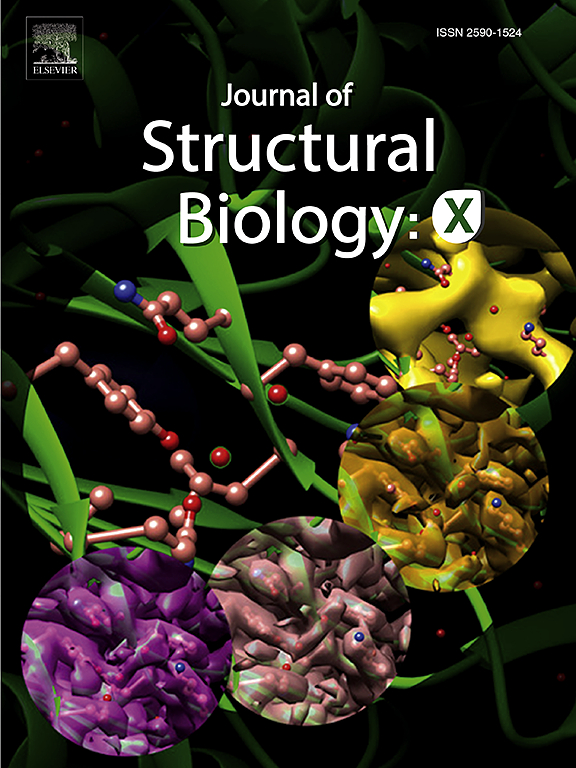利用多种技术研究腕足动物Lingula anatina (Lamarck, 1801)壳的结构完整性和化学复杂性。
IF 2.7
3区 生物学
Q3 BIOCHEMISTRY & MOLECULAR BIOLOGY
引用次数: 0
摘要
Lingula anatina是早期腕足动物的活代表,它的壳体现了一种独特的有机磷生物矿化策略,将矿物相与有机成分相结合,以增强结构。本研究采用扫描电镜(SEM)、能量色散x射线能谱(EDS)、电感耦合等离子体发射光谱(ICP-OES)、x射线衍射(XRD)、拉曼光谱等方法对壳的微观结构、组成、矿物学等进行了综合分析。扫描电镜成像显示了不同区域的微结构,从致密的纤维层到多孔的网状层,表明结构增强和灵活性的功能专业化。元素分析证实了以氟磷灰石为主的磷酸钙基质,并富含微量元素,如Mg、Mn和Fe。XRD和Raman数据验证了氟磷灰石和方解石晶体共存,并具有明显的非晶相。这些发现强调了Lingula进化保留了一种适应环境相互作用、结构弹性和生物矿物控制的分层有机-无机复合外壳。本文章由计算机程序翻译,如有差异,请以英文原文为准。

A Multi-Technique Investigation to Explore the Structural Integrity and Chemical Complexity of the Brachiopod Lingula anatina (Lamarck, 1801) Shells
The shell of Lingula anatina, a living representative of early brachiopods, exemplifies a unique organophosphatic biomineralization strategy that integrates mineral phases with organic components for structural enhancement. This study employs scanning electron microscopy (SEM), energy-dispersive X-ray spectroscopy (EDS), inductively coupled plasma optical emission spectrometry (ICP-OES), X-ray diffraction (XRD), and Raman spectroscopy to comprehensively analyse the microstructure, composition, and mineralogy of the shell. SEM imaging reveals distinct regional microarchitectures, from compact fibrous laminae to porous, reticulate layers, indicating functional specialization in structural reinforcement and flexibility. Elemental analyses confirm a calcium-phosphate matrix dominated by fluorapatite and enriched with trace elements like Mg, Mn, and Fe. XRD and Raman data validate the coexistence of crystalline fluorapatite and calcite with significant amorphous phases. These findings highlight Lingula’s evolutionary retention of a hierarchical, organic–inorganic composite shell adapted for environmental interaction, structural resilience, and biomineral control.
求助全文
通过发布文献求助,成功后即可免费获取论文全文。
去求助
来源期刊

Journal of structural biology
生物-生化与分子生物学
CiteScore
6.30
自引率
3.30%
发文量
88
审稿时长
65 days
期刊介绍:
Journal of Structural Biology (JSB) has an open access mirror journal, the Journal of Structural Biology: X (JSBX), sharing the same aims and scope, editorial team, submission system and rigorous peer review. Since both journals share the same editorial system, you may submit your manuscript via either journal homepage. You will be prompted during submission (and revision) to choose in which to publish your article. The editors and reviewers are not aware of the choice you made until the article has been published online. JSB and JSBX publish papers dealing with the structural analysis of living material at every level of organization by all methods that lead to an understanding of biological function in terms of molecular and supermolecular structure.
Techniques covered include:
• Light microscopy including confocal microscopy
• All types of electron microscopy
• X-ray diffraction
• Nuclear magnetic resonance
• Scanning force microscopy, scanning probe microscopy, and tunneling microscopy
• Digital image processing
• Computational insights into structure
 求助内容:
求助内容: 应助结果提醒方式:
应助结果提醒方式:


